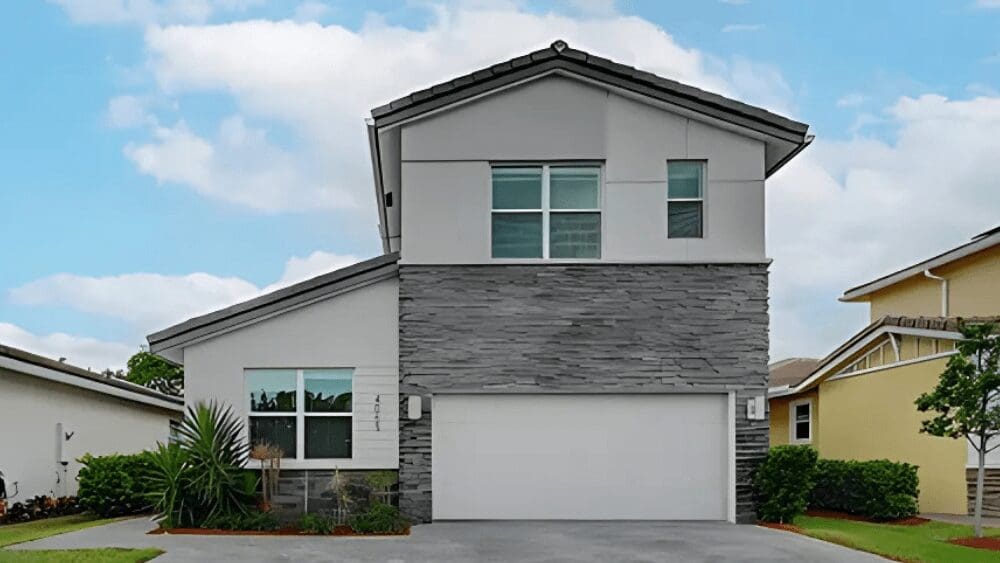
Robin and her family were finally ready to buy their dream house: a four-bedroom colonial in a quaint Wisconsin town. The showing was going great, with the first three bedrooms hitting everything on their checklist. A glance at bedroom number four was all they needed to know that they were touring their future home — and there were just two doors left to go. Behind door number one: a closet. Door number two: another closet! Where in the world was bedroom number four? Down in the basement, they found it. A small, windowless room that happened to have a built-in closet. This was a bedroom? That was no fourth bedroom according to Robin and her family. But to the home sellers and their listing agent, the space qualified. So who was right? Let’s find out as we answer the top seven questions when it comes to counting the bedrooms in your home. The legal definition of a bedroom depends on where you live. This is because building codes vary state-by-state, and it’s these building codes that determine what elements a room must have in order to be legally called a bedroom. Some states have square footage requirements, like Texas, which requires that bedrooms have a floor space “not less than 7 feet in any horizontal direction and a minimum ceiling height of 7 feet.” Colder northern states, like Connecticut, require bedrooms to have a heat source. Other states have requirements that you’d probably never even think to ask when settling on the bedroom count for your MLS listing. Take Massachusetts, which says that you cannot claim to have more bedrooms than your septic system is designed to handle. In some areas, bedroom requirements differ depending on where the room is located in the house. For example, Robin’s sellers were out of luck with their basement “bedroom,” because according to Wisconsin’s Department of Commerce, basement bedrooms must have a window at least 20 inches by 24 inches, to provide both natural light and an emergency exit. Still other states are much less stringent on a room’s must-haves in order to qualify as a bedroom: “In Alabama, all it has to have is a closet and a window,” says Huntsville, Alabama agent Susan Chipman. The best place to find the bedroom zoning codes is by taking a look through the building codes for your state. However, it’s not always the state that’s in charge of defining what constitutes a bedroom. At the state level (as is the case in Alabama), there may be relatively few requirements, but most local municipalities have their own zoning regulations. This means that, while one city or county may only require that a bedroom have a window and a closet, another county in the same state may regulate bedrooms by square footage, or even distance to the nearest bathroom. Find the local zoning laws that apply to your house by doing an easy internet search using the keyword zoning, plus your county and/or town name. Then it’s just a matter of searching through all the zoning laws for the ones that apply to bedrooms. You can also ask your real estate agent whether or not a particular room qualifies as a bedroom. They might already know, and if they’re not sure, they can tell you who to contact to get the right information in your area: “When sellers ask about verifying whether or not a space qualifies as a bedroom, I give them the number to call our local real estate board,” advises Chipman. The rules on bedroom requirements vary from state to state, county to county, and even town to town. However, there are some common bedroom requirements in building codes that can give you a ballpark idea if your questionable space can qualify as a bedroom. One thing every bedroom needs is room for a bed. While some municipalities don’t set a minimum square footage standard, it’s commonly accepted that a single occupancy bedroom should have at least 70 square feet of floor space. This equates to a 7-foot by 10-foot room (or an 8-foot by 9-foot room) at the minimum. In addition, some cities and states have additional requirements depending on how many people will occupy the bedroom. If a room is expected to accommodate two people, for example, regulations might mandate a minimum of 100 square feet, or at least 50 square feet per occupant. Windows provide much more than a view — they serve three main functions in a bedroom: lighting, ventilation, and egress, which is a fancy word for “a means of escape.” That’s why most municipalities have size requirements for windows, including that windows must have a total combined glass area of at least 8% of the floor area, and open at least halfway. And one window in the room must be at least 5.7 square feet and can’t be installed more than 44 inches above the floor. This is one of those “requirements that varies depending on where you live. In most areas where the temperature drops below 60 degrees F during the winter, building and zoning codes require bedrooms to have a heat source. In toasty states, like Arizona, rental tenants are entitled to A/C in their bedrooms, a requirement that some municipalities have adopted to residential bedroom requirements, too. Here’s another tricky one, especially for historic home owners. Most modern building codes require that bedrooms must be single entry — meaning that you don’t need to pass through another bedroom to access the space. Hallways weren’t a feature of residential houses until the late 19th century, though, so some historic homes, especially on the East Coast, have bedrooms that are only accessible through other bedrooms. In these areas, zoning laws typically account for these historic floor plans and do not include access in the bedroom zoning codes. Requiring bedrooms to have a closet seems like a given these days, and some states and counties do require spaces labeled as bedrooms to have a built in closet. However, this feature has a relatively short history in American architecture. While closets and dressing rooms have existed for centuries, it wasn’t common for bedrooms in historic homes to have closets. For this reason, municipalities with a high number of historic homes may waive the closet requirement or not have one at all. Some states, like Alabama, do list closets as one of the few requirements that a bedroom must have. But that’s not true across the country. In other areas, like California (which has a sizable number of historic homes), the International Residential Code does not mandate a bedroom to have a closet. Whether or not you can call a room a bedroom if it does not have a closet all comes down to your local building codes and zoning laws. There is a way around this issue for historic homes with spaces that don’t qualify as bedrooms due to the lack of built-in closets: “Start off by not focusing on how many bedrooms there are when writing up the MLS listing,” suggests Chipman. “Focus instead on the fact that it’s a charming 1920s home with historic quality and character, so that buyers know to expect that it’s not the typical three bedroom, two bath house.” For the most part, there won’t be legal ramifications if you misrepresent the number of bedrooms in your home — but there will probably be financial ones. After price, how many bedrooms and baths a house has is typically the highest priority for home buyers in their search. If you advertise yours as a four-bedroom house when it really only has three true bedrooms, you’re marketing to the wrong buyer pool. You may get a lot of four-bedroom buyers through the door, but they won’t be making offers — and you wind up missing out on the buyers who want a true three-bedroom home. In the end, you’re stuck with a house you can’t sell that sits on the market so long that you’ll eventually need to drop the price. Expect legal trouble though, if you misrepresent the number of bedrooms your home has if it has a septic tank. The size of the septic tank your home is required to have is in large part determined by the number of bedrooms (as bedrooms impact occupancy). Septic systems are designed based on usage of 110 gallons per day per bedroom. Sellers who add extra bedrooms — or even claim an existing space as an additional bedroom — without upgrading the septic system may find themselves headed for a lawsuit. “Whether your home has three, four, or five bedrooms doesn’t make a huge impact on its value. You will see a difference in value if your house only has two bedrooms, though, because they’re harder to sell,” explains Chipman. While you may not add a lot of value by claiming an additional bedroom in the MLS, where the bedroom count really matters is when you’re pulling comps. Agents gather comparables based on factors like square footage, neighborhood, and of course, number of bedrooms. If you’re claiming that a bonus room in your three-bedroom house bumps it up to four bedrooms, then your comparative market analysis (CMA) will be created based on other four bedroom houses in your neighborhood. That can work toward the benefit of your home’s listing price, if four-bedrooms are selling for significantly more than three bedrooms. On the other hand, your house is likely to be outclassed — which means you’ll probably need to list at a lower price than the true four-bedroom homes on your block. You are much better off advertising what you’ve got to buyers looking for a home your size, rather than trying to fudge another bedroom simply to raise your asking price by a few grand. Let’s say you technically have the square footage and number of rooms for a true four-bedroom home, but one space simply doesn’t qualify due to a building or zoning code technicality. You may not be able to include bedroom four in the MLS’s bedroom tally, but that doesn’t mean you have to automatically downgrade your home’s value to the three-bedroom bracket. “If I’m selling a three-bedroom house with another sizable room that’s just missing a closet or a window, I do not include it as a bedroom for the MLS count, but I definitely advertise that it could be used as a bedroom,” explains Chipman. “What I do is, I list it near the beginning of my ad, and I paint the picture that it could be an office, or a playroom. This implies that it could be used as an additional bedroom without calling it a bedroom.” In fact, you can even stage that extra space as a working bedroom, even if you haven’t counted it in the MLS. Simply adding in a bed, and an armoire if it’s missing a closet, helps buyers visualize how the space could accommodate their family. That way they’ll see your home’s potential regardless of their exact wish list criteria. The gamble taken by a seller who claimed a non-qualifying space as a fourth bedroom paid off in Robin’s case. Her family wanted that extra bedroom for a home office, and the isolated space in the basement turned out to be the perfect set-up for them. But there’s no guarantee that the gamble of claiming a non-qualifying bonus room as an extra bedroom will pay off for you. As a matter of fact, it may actually hurt your home sale in the end. Claiming an extra bedroom isn’t going to let you list your home for more than a few grand more, and you may be attracting the wrong buyers who are never going to make an offer on your home. You are much much better off showcasing your home as a star in its appropriate bedroom count bracket than getting outshone and outsold in competition against bigger homes.What is the legal definition of a bedroom for real estate listings?
Where can you find local bedroom zoning codes?
OK, so it varies. But what are some common bedroom requirements?
Square footage:
Windows:
Temperature control:
Access:
Closets:
Can you call a room a bedroom without a closet?
What happens if you misrepresent your number of bedrooms in a listing?
How does bedroom count affect home value?
Marketing non-legal bedrooms: How can you show their use?
The not-so-legit extra bedroom gamble



